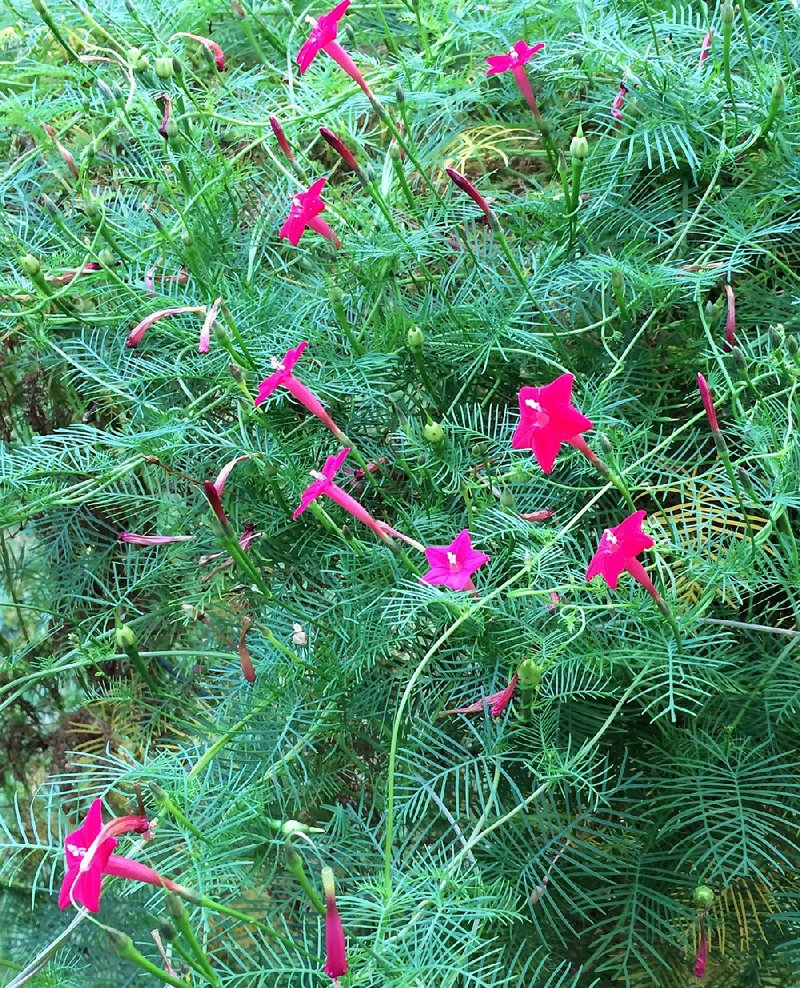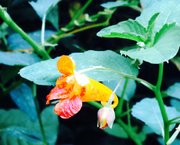Q Could you please comment on army worms? Cabot seems to be seeing a lot of them.
A Newly hatched fall army worms are light green or cream-colored with a dark head and measure about 1/16 of an inch long. As a worm grows, it becomes darker in color and the head develops a light-colored, Y-shaped mark down the front. In addition, the next to last abdominal segment has four small dark dots. A fully grown fall army worm is about 1 1/2 inches long. If you have them marching across your lawn, the time to treat is as soon as you see them. The smaller they are, the easier it is to control them. Fall army worm outbreaks often occur when we have very dry periods followed by a rain that re-greens the lawns -- such as we have just seen. There are numerous sprays labeled for fall army worms, including BT (bacillus thuringiensis), GrubEx and Sevin. A healthy lawn should not be killed by one attack of army worms, but a weakened or newly established lawn can suffer damage.
Q I am sending you a picture of a sun-loving plant I know as "hummingbird vine" or "cardinal plant." I usually collect seeds from dried flower pods to plant the following year. But this year there are no little black seeds in the pods. I'm not sure what is happening. Suggestions? Thanks.
A The plant in question is Ipomoea quamoclit, commonly called cypress vine or hummingbird vine. It is related to morning glory and is an annual vine; but as you know, typically it forms seeds to reseed itself -- meaning people can save the seeds to plant. I think you will have seeds, but everything was a bit later than normal this year. I would suspect you have just missed some as well, since the vine has been blooming for a while.
Q What is this flower's name and origin? [The reader sent a photo.]
A The plant in question is an annual native impatiens, commonly called jewelweed (Impatiens capensis). It is found statewide in shady, moist places. This one is the spotted jewelweed or touch-me-not. There are also solid yellow varieties. Legend has it the sap can be rubbed on skin to prevent or stop a breakout caused by poison ivy.
Q My zinnias and marigolds are huge. Is there a market for seeds? I am saving a lot of them but have hundreds of the marigolds. I don't want to sell them and will give them away.
A Save the seeds and put them in envelopes to give as holiday presents. Include instructions on how to plant them. You could also contact your local Master Gardener group via the county extension office to ask whether they are interested in having seeds for their plant sales. Or you could donate seeds to a local school next spring.
Q We have lost the majority of the grass in our backyard, leaving nothing but dirt and dust. We have full shade in the backyard, so I know that is part of the problem. What type of grass sod or grass seeds could we lay or plant to establish a backyard lawn that would thrive in shade? We are committed to thoroughly watering -- whatever can be done to have a backyard lawn.
A Grass does not grow in the shade. You have several options. You can mulch the yard to make it more attractive or put in groundcover. Among many options, groundcovers include Asiatic jasmine, ajuga, Mondo grass and monkey grass (liriope). You could establish a moss garden, which you could walk on. Moss is a nice green cover in the shade. You could create a combination landscape, with pathways of mulch and beds of groundcovers or shade-loving perennials and shrubs. You just can't grow a typical lawn in the shade, but that doesn't mean you have to have dirt and dust.
Q We moved to a new home about a year ago, and it had an apple tree in the yard. This spring it bloomed, and small apples began to grow. After the apples were about walnut size, I noticed a few brown spots on some of them. After about a week, half of an apple appeared rotten. Eventually all the apples did the same thing. I don't know what kind of apple tree this is or how old it is. It's about 20 feet tall. Do you know why this happened? Should I have sprayed it with something?
A Apples and pears tend to be more forgiving than peaches and plums when it comes to insects and diseases, but if you want blemish-free large fruits, you need to follow a spray schedule. There are many diseases and insects that can attack. (The University of Arkansas Cooperative Extension Service home-spray schedule is available online at uaex.edu; search for "FSA-7503.") Fruit trees also need to be pruned annually.
Janet B. Carson is a horticulture specialist for the University of Arkansas Cooperative Extension Service. Write to her at 2301 S. University Ave., Little Rock, Ark. 72204 or email her at
jcarson@arkansasonline.com
HomeStyle on 09/19/2015

